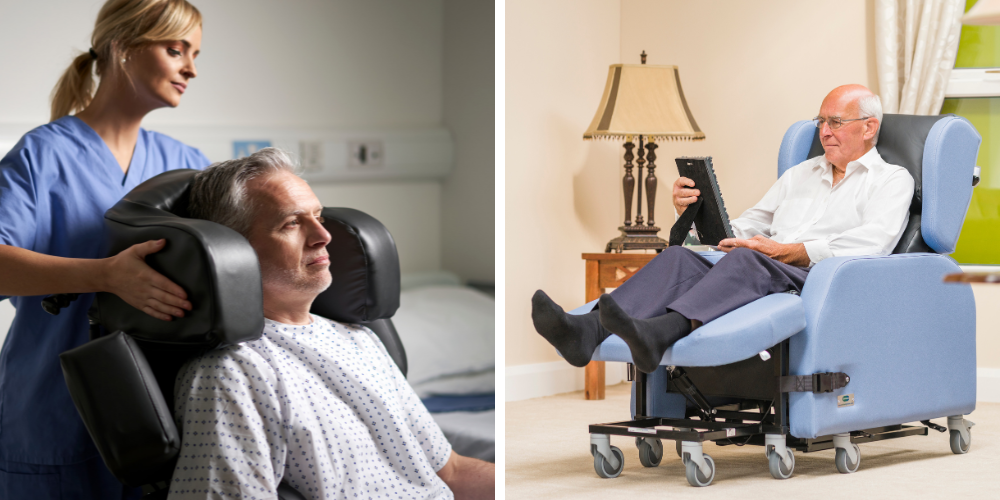KEY CONSIDERATIONS FOR SEATING ASSESSMENTS
Back
A recent social media poll carried out by specialist seating manufacturer, Seating Matters, revealed that 56% of Occupational Therapists lacked confidence when carrying out a seating assessment.
When recommending a specialist chair, it’s important to identify a seating solution that…
- provides the required postural support;
- protects the users’ skin and prevent pressure injuries;
- offers high levels of comfort;
- and ensures safety against falling from the chair.
As an approved supplier of Seating Matters specialist chairs, and with a team who are highly experienced in the specification of care chairs, Independence Mobility are here to support OTs with seating assessments.
To help, here are the key things to consider when conducting a chair assessment…
1. What range of movement and mobility does the client have?
One of the first steps is to assess the range of motion that the client has. How fixed or flexible are their joints? What is their postural presentation in their current chair? What is the source of their problem?
2. What are the main goals to be achieved from seating?
Next, you need to establish what the seating needs to achieve? What are the goals? These should be considered in conjunction with other parties as everyone may have a different perspective. As a therapist, you may be primarily concerned with function (activity, physiological, and psychological functions), whereas the end-user and carers may prioritise comfort, ease of use, and easy maintenance.
3. What are the critical measurements?
To ensure a chair set up correctly to support the client’s postural needs, it’s essential to take the critical measurements.
The critical measurements are...
- Seat Width: This is the widest point that the chair needs to accommodate. This may not be the hips – you should also consider trochanter width, ischial width, and trunk width.
- Seat Depth: The seat depth should be approximately 1 inch shorter than leg length. This can be calculated by measuring from the back of the buttock to the popliteal fossa.
- Seat to Floor or Footplate Height: To establish this, measure the distance from the popliteal fossa to the heel.
- Footrest Angle and Footrest Width: These measurements are based on how the feet should be supported according to plantar/dorsiflexion or inversion/eversion.
- Back Height and Angle: The back height is measured from the seat of the chair to the required chair back height, including allowance for supporting the head. Also note the optimum back angle.
- Armrest Height: The height of the armrest is critical in ensuring good posture. When taking measurements, measure the height for each arm separately in case of any differentiation.
By considering all of the above, you will have the necessary information to put together your seating recommendation.
Don’t forget to document your findings and measurements to justify your chair specification.
